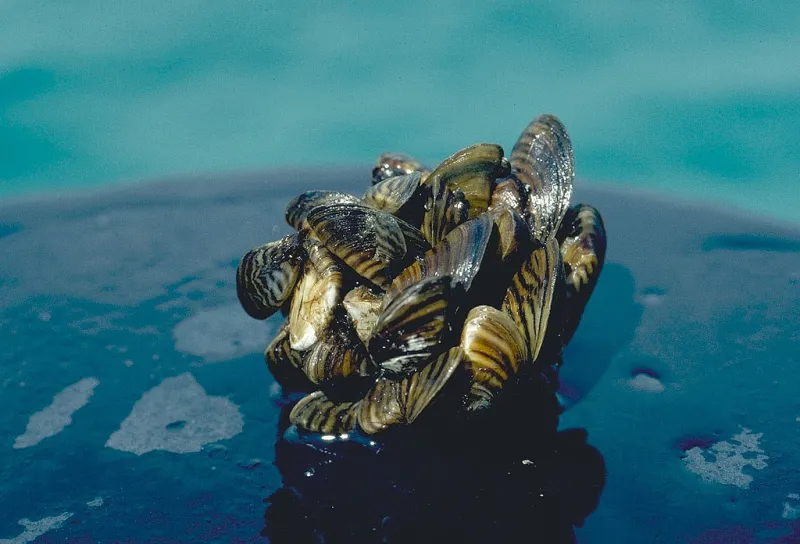Zebra Mussels (Dreissena polymorpha)

This bivalve mollusk is native to the Caspian Sea, lagoons of the Black Sea, and their inflowing rivers. It lives in fresh and brackish water and cannot tolerate full seawater. In the 18th and 19th centuries, zebra mussels spread through European canals, reaching the Baltic Sea and many European river estuaries. In 1988, it was discovered in the Great Lakes and has spread to many rivers and lakes in eastern and central North America. The mollusk has fouled power plants, water purification facilities, ships, and littered beaches with decaying mussels and sharp shells. Large populations have devoured plankton and decreased the food available for commercial and game fish. It is abundant in the fresh, tidal parts of the St. Lawrence and Hudson Rivers, and has been discovered at the head of Chesapeake Bay. Read "No Passport Required: Five Invaders You Should Know," to learn about other marine invasive species.

